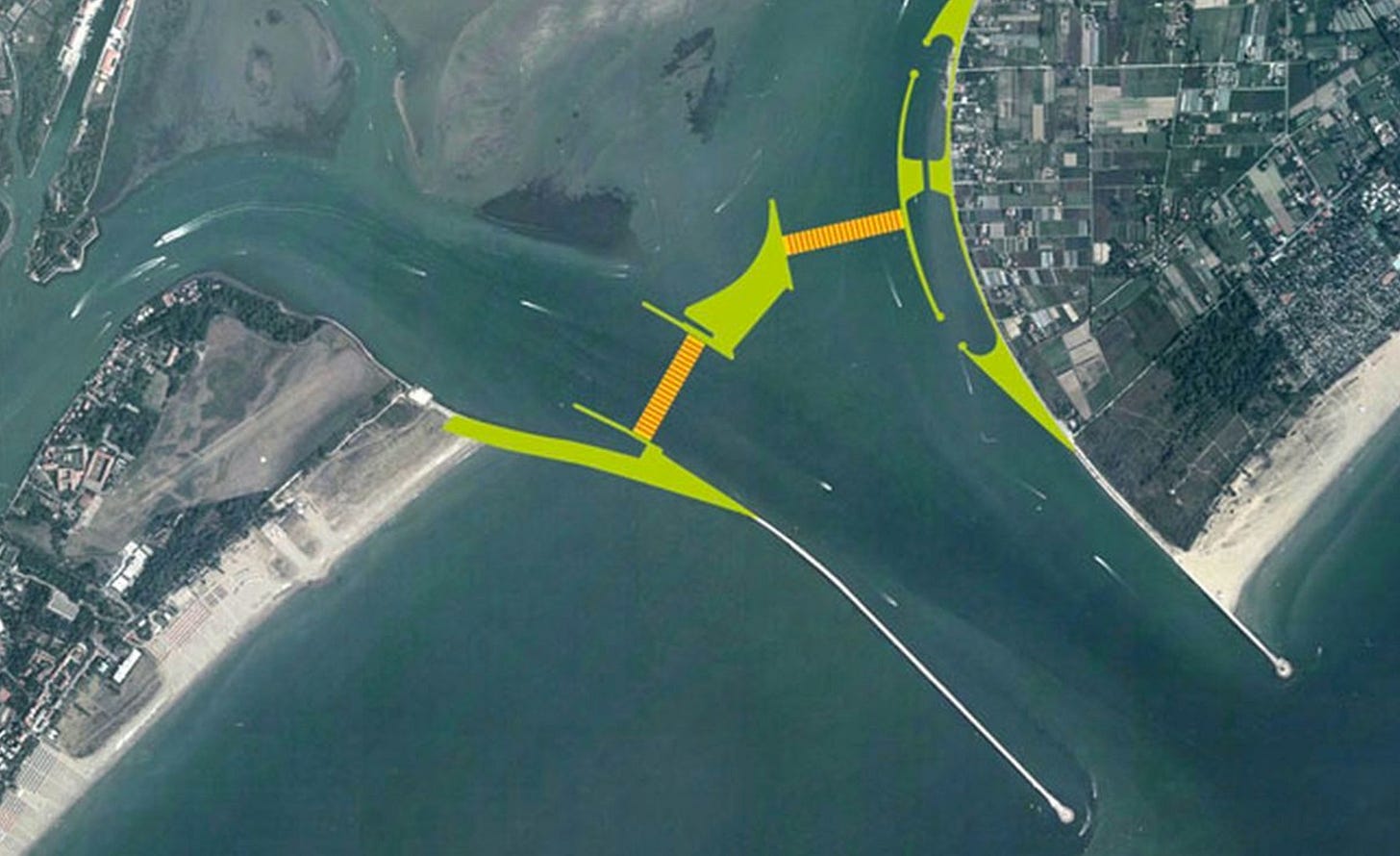The $7 billion mega project to save Venice
Venice, a city known for its canals and picturesque views is now sinking due to rising sea levels and global warming. Let's see how Italy battled this major setback.
Venice has been regularly flooded by high tides for centuries because it is a coastal city. Venetians treated this as a part of everyday life and weren’t bothered when the city flooded a few times a year (I would be freaking out). However, the number of floods has exponentially increased in recent decades. According to a recent paper done by Nature, it predicts that 360 million people will be threatened on land by annual flood events globally. Currently, Venice is flooding about 100 times per year including both man-made and natural floods, who knows what state Venice will be in 10 years down the line.
The MOSE flood barrier system
The MOSE (Modulo Sperimentale Elettromeccanico) is a series of retractable gates that, when raised, prevent high tides (up to 3 meters) from engulfing the Venetian islands. These 78 gates are placed at three inlets, Lido, Malamocco, and Chioggia, and separate the Venetian lagoon from the Adriatic sea.
History of the MOSE
The project was detailed in the 1980s and 1990s without much thought of climate change. As a result, there were many technical difficulties and changes. With an original price tag of €4.196 billion ($4.98 billion) and a predicted finish data of 2011, Venice was confident they can finally put a hold on the sinking city. However, due to corruption and technical challenges, the date of completion got postponed to 2018. I guess this was also too early because the project is now expected to be fully completed by the end of 2021. The projected total cost of the MOSE project increased from €4.196 billion to €5.496 billion ($6.5 billion), up €1.3 billion 😮.
Fun fact: There was so much corruption in this mega project that a 2014 investigation led to 35 arrests, including the region’s governor, Giancarlo Galan.
How the MOSE barrier system works
Each gate consists of metal box-like structures with a width of 20 meters (66 ft) and varying heights of 18.5-29 meters (61 to 95 ft). During normal tides, these gates are filled with water and rest in their respective housing structures. During high tides, compressed air is pumped into the gates to empty out the water. Because air is less dense than water, the gates rise out of the water and act as a barrier to stop the tide from entering the lagoon.
The whole system is also flexible because:
individual gates can be lifted and dropped.
The gates don’t obstruct any ships passing when they’re not active
allows for the passage of emergency boats even when the gates are active
Conclusion
The MOSE barrier system is now complete but is in the testing phase. For the first time, the MOSE blocked a high tide of 130 cm on October 3rd, 2020. We now know it is working and can only hope there aren’t any devastating floods in the coming decades. The current barrier system should work for the next couple of decades is what the experts are saying, but sea levels keep rising and global warming is getting worse. It’s just a matter of when the high tides will surpass even the raised gates of the MOSE. It is estimated that the maintenance cost of the MOSE will be around €100 million ($12 million), although there is a high uncertainty surrounding this value. Let’s hope Italy comes up with a permanent solution to the flood problem before the tides engulf these expensive gates.
If you liked this post and want to read more like it, make sure to subscribe to get notified about even more amazing content! Thanks for reading!





